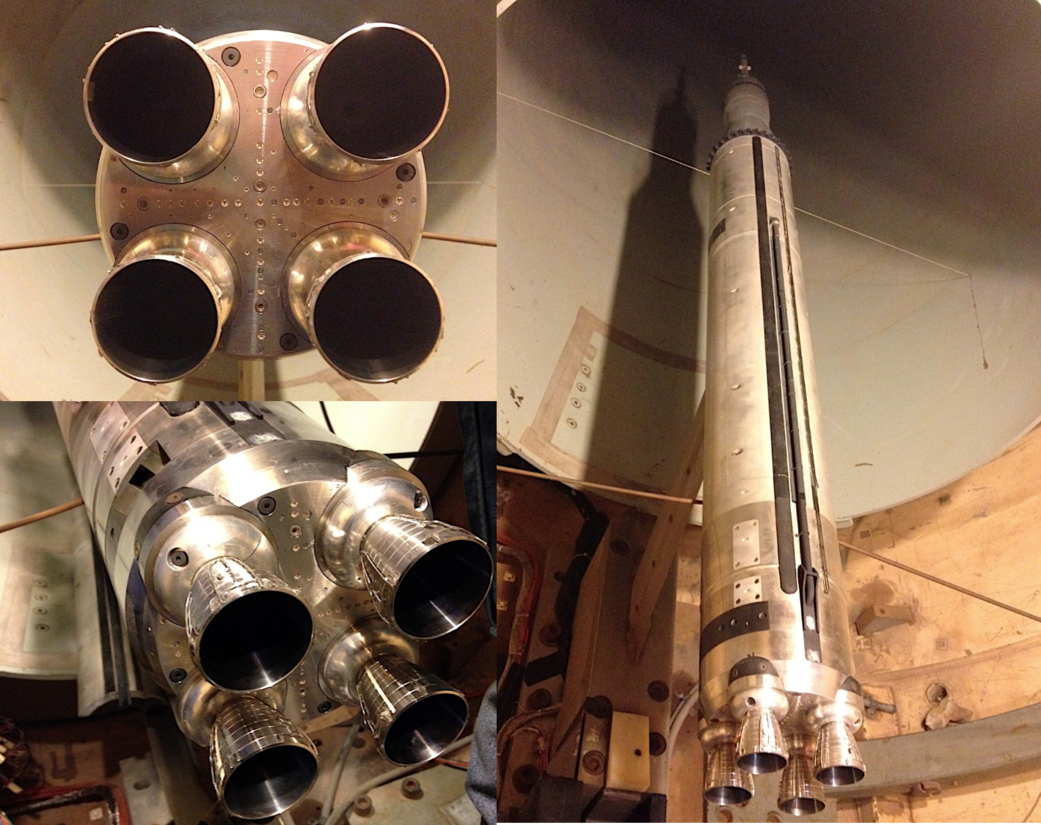A 2-percent scale model of the Space Launch System core stage RS-25 engines, in the pictures at left, and a model of the SLS without the twin boosters is used for nominal, core-stage-only testing at A 2-percent scale model of the Space Launch System core stage RS-25 engines, in the pictures at left, and a model of the SLS without the twin boosters is used for nominal, core-stage-only testing at CUBRC Inc. in Buffalo, New York. NASA is working in close collaboration with CUBRC to test mini models of the SLS propulsion system and entire vehicle in a shock tunnel at the facility. The test series will provide data on the convective heating environments that the base of the rocket will experience upon ascent. That data will be used to verify flight hardware design environments and set specifications for the design of the rocket’s base thermal protection system.CUBRC Inc. in Buffalo, New York. NASA is working in close collaboration with CUBRC to test mini models of the SLS propulsion system and entire vehicle in a shock tunnel at the facility. The test series will provide data on the convective heating environments that the base of the rocket will experience upon ascent. That data will be used to verify flight hardware design environments and set specifications for the design of the rocket’s base thermal protection system.
Image Credit: NASA/MSFC





























